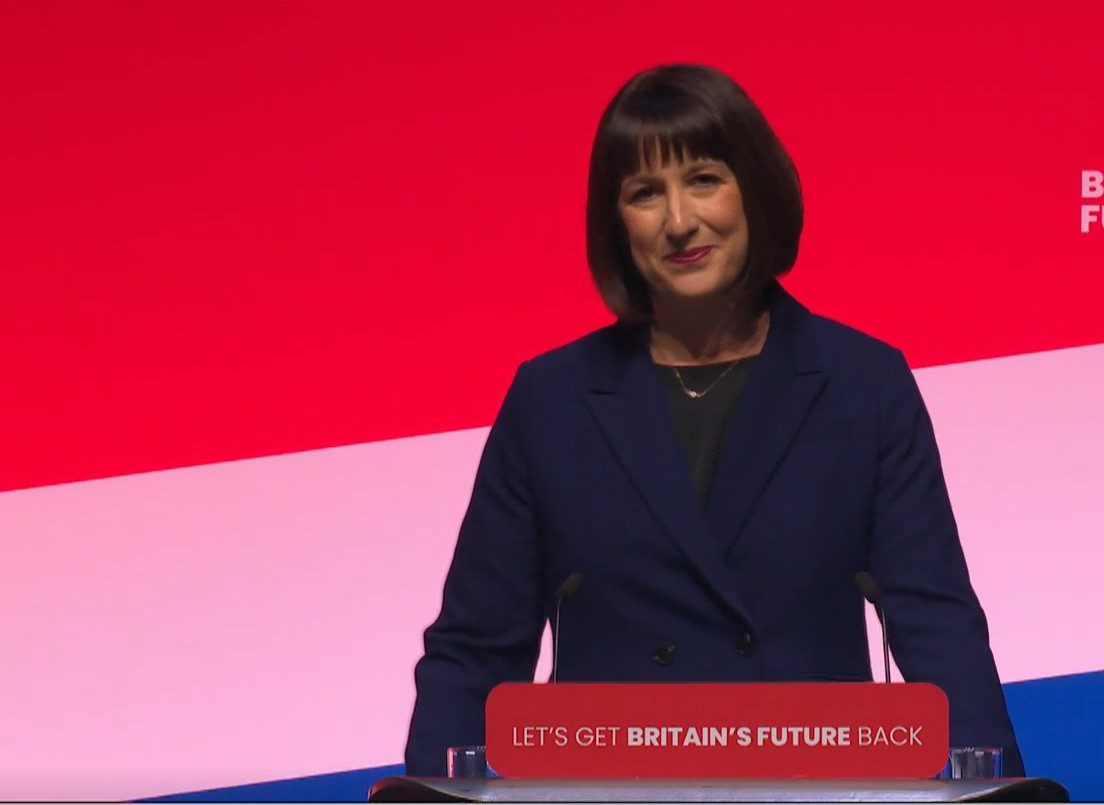The Scargill Influence? Examining Rachel Reeves' Labour Economic Policy

Table of Contents
Reeves' Stance on Industrial Relations
This section explores Reeves' views on worker rights, trade unions, and industrial action, comparing them to the era of Arthur Scargill. A key aspect of understanding Rachel Reeves' economic policy is her approach to labor relations.
Comparison with Scargill's Era
Does Reeves' approach echo Scargill's confrontational tactics, or does it represent a more moderate, modern approach? This comparison is vital for assessing the potential impact of her policies on industrial harmony and economic stability.
- Union Power: While Scargill advocated for aggressive union action and significant increases in worker power, Reeves’ approach appears more nuanced. She supports strong unions but emphasizes the importance of responsible industrial action and collaborative partnerships between businesses and workers. This suggests a shift away from the confrontational strategies of the past.
- Minimum Wage and Worker Protections: Reeves has consistently supported increases in the national minimum wage and stronger worker protections, aligning with Labour's traditional commitment to fair wages and employment rights. However, the extent to which these policies would impact business competitiveness needs careful consideration. Scargill's era focused heavily on maximizing worker gains, regardless of economic consequences for businesses.
- Rhetoric and Policy: While both Reeves and Scargill championed workers' rights, their methods differ significantly. Reeves' rhetoric generally favors dialogue and negotiation, unlike Scargill's more confrontational style. This contrast underscores the evolution of Labour's approach to industrial relations. Further analysis of policy documents and speeches will offer a deeper insight into these differences.
Several experts have commented on these differences, highlighting Reeves' commitment to a more collaborative approach than that of Scargill. News articles analyzing her recent speeches and policy announcements further support this interpretation.
Fiscal Policy Under a Reeves-Led Labour Government
This section focuses on Labour's plans for taxation, government spending, and national debt reduction under Reeves’ leadership, a crucial component of Rachel Reeves' economic policy.
Sustainable Growth vs. Austerity
Reeves aims to balance stimulating economic growth through investment and controlling government spending to reduce the national debt. This section delves into the specifics of this balancing act.
- Tax Proposals: Labour's plans include targeted tax increases on higher earners and corporations to fund increased public spending. Specific proposals include increases in corporation tax and adjustments to income tax thresholds. The impact of these changes on investment and economic growth requires thorough analysis.
- Government Spending: Significant increases in government spending are planned for areas such as infrastructure, healthcare, and education. These investments are intended to boost productivity and improve public services, but questions remain about their sustainability and potential inflationary pressures.
- Debt Reduction: The plan aims to reduce the national debt through a combination of increased tax revenue and controlled spending. However, critics argue that the proposed level of spending is unsustainable and may lead to increased borrowing. The feasibility and effectiveness of this approach will be crucial to the success of Labour’s economic policy.
Reeves' Approach to Public Services
This section focuses on Labour's plans for public services under a Reeves-led government and their potential economic impact.
Nationalisation and Privatisation Debate
This section examines Labour's stance on nationalisation or privatisation of key industries and its potential effects.
- Affected Industries: While Labour hasn't announced widespread nationalisation, specific sectors like energy or rail may see increased state involvement. Privatisation is less likely under a Reeves-led government, but certain areas may see further market liberalization.
- Costs and Benefits: The potential costs of nationalisation include significant capital investment and potential inefficiencies. Benefits may include improved service quality and greater public control. Privatisation, conversely, might boost efficiency but could also lead to reduced service quality and higher prices for consumers.
- Competition and Innovation: Nationalisation could reduce competition, potentially hindering innovation. Privatisation, however, may lead to increased competition but may also drive businesses to prioritize profit over public interest.
International Trade and Globalisation
This section examines Labour's position on international trade agreements and globalisation under Reeves' economic policy.
Balancing Global Competitiveness and Domestic Industries
This section explores how Labour aims to balance global competitiveness with protection for domestic industries.
- Brexit and Trade Implications: Labour's stance on Brexit and future trade deals is crucial. They aim to secure beneficial trade agreements while safeguarding British industries. The specific details of their approach remain to be fully clarified.
- International Trade Agreements: Labour generally supports free trade but also advocates for policies to protect domestic industries from unfair competition. This necessitates a careful balancing act.
- Job Security: Addressing job security concerns in a globalized economy is central to Reeves' approach. Specific policies aimed at supporting workers in industries facing global competition remain to be fully detailed.
Conclusion
This article has examined key aspects of Rachel Reeves' economic policy, exploring its potential impact on the British economy. While some commentators have drawn parallels between her approach and that of past figures like Arthur Scargill, a nuanced analysis reveals a more complex picture. Reeves' policies represent a blend of traditional Labour values with a focus on sustainable growth and fiscal responsibility. Whether this approach will resonate with voters remains to be seen. Further research and analysis will be crucial as the election draws nearer. To stay informed on the evolving landscape of Rachel Reeves' economic policy, continue to follow our updates and explore further resources on the subject.

Featured Posts
-
 Canadian Red Cross Wildfire Relief Efforts In Manitoba Your Donation Matters
May 31, 2025
Canadian Red Cross Wildfire Relief Efforts In Manitoba Your Donation Matters
May 31, 2025 -
 Comerica Park Hosts Detroit Tigers And Chicago White Sox For Opening Day 2025
May 31, 2025
Comerica Park Hosts Detroit Tigers And Chicago White Sox For Opening Day 2025
May 31, 2025 -
 2025 Pro Motocross Championship Preview Riders Teams And Predictions
May 31, 2025
2025 Pro Motocross Championship Preview Riders Teams And Predictions
May 31, 2025 -
 Assessing The Risk Alberta Wildfires And Their Impact On Oil Output
May 31, 2025
Assessing The Risk Alberta Wildfires And Their Impact On Oil Output
May 31, 2025 -
 Analyzing The 2025 Pro Motocross Championship What To Expect
May 31, 2025
Analyzing The 2025 Pro Motocross Championship What To Expect
May 31, 2025
